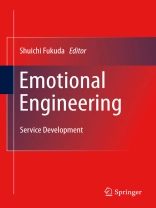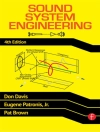In an age of increasing complexity, diversification and change, customers expect services that cater to their needs and to their tastes. Emotional Engineering describes how their expectations can be satisfied and managed throughout the product life cycle, if producers focus their attention more on emotion. Emotion plays a crucial role in value recognition, but it is also important for team work, which extends beyond human-human to human-machine and human-environment to enable people to cope with frequently and extensively changing situations. Emotional Engineering proposes the development of services beyond product realization and the creation of value on a lifetime, not just a one-off, basis. As emotion is very much multidisciplinary, chapters cover a wide range of topics that can be applied to product development, including: • emotional design in the virtual environment; • shape design and modeling; • emotional robot competence; and • affective driving. Emotional Engineering is intended to provide readers with a holistic view of its research and applications, enabling them to make strategic decisions on how they can go further beyond product realization. It is recommended for all pioneers in industry, academia and government, who are trying to work with their customers to create value.
Table of Content
1. Emotion: A Gateway to Wisdom Engineering.- 2. Shoji: A Communication Terminal for Sending and Receiving Ambient Information.- 3. A Mixed Reality-based Emotional Interactions and Communications for Manufacturing Skills Training.- 4. Exploitation of Designers and Customers’ Skills and Creativity in Product Design and Engineering.- 5. A Study on the Relationships between Drivers’ Emotion and HUD Image Designs.- 6. Emotional Design in the Virtual Environment.- 7. Emotional Robot Competence and its Use in Robot Behavior Control.- 8. Shape Design and Modeling with 1/F Fluctuation Characteristics.- 9. Human-Entrained Embodied Interaction and Communication Technology.- 10. Personal Cognitive Characteristics in Affordance Perception: Case Study in a Lobby.- 11. Emotion-Oriented Human Computer Interaction.- 12. BROAFERENCE-A Prototype of an Emotion based TV Quality Rating System.- 13. 3D Shape Evaluation Properties in Real Space and Virtual Space.- 14. Affective Driving.- 15. Approximate Multi-Objective Optimization of Medical Foot Support.- 16. Kansei Quality in Product Design.- 17. Emotion in Engineering Design Teams.- 18. Measurement of Wakuwaku Feeling of Interactive Systems Using Biological Signals.- 19. Footwear Fitting Design.- 20. Psychological Teamology, Emotional Engineering and the Myers-Briggs Type Indicator (MBTI).- 21. Designing of Emotional and Creative Motion.
About the author
Shuichi Fukuda received his doctoral degree in Mechanical Engineering from the University of Tokyo. After working in the Department of Precision Machinery, University of Tokyo, he moved to the Welding Research Institute, Osaka University. Later he worked concurrently at the Institute of Industrial Science, University of Tokyo. He became Full Professor of Systems and Management Engineering at the Tokyo Metropolitan Institute of Technology and was also Visiting Professor at West Virginia University, Stanford University, Osaka University and Cranfield University. Since his retirement, he has continued in his position as Visiting Professor at Cranfield University, as well as working as Consulting Professor at Stanford University and concurrently as Visiting Professor at the Open University of Japan.












